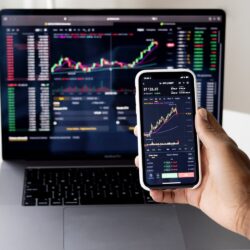
TON: One of the highest-profile blockchain projects without Durov
Why Telegram Open Network was never launched and how the platform is evolving after the court injunction
Since the advent of bitcoin twelve years ago, the cryptocurrency has failed to meet its key objective of becoming a convenient and accessible tool for the average user. The only proven achievement has been easy access to exchanges and trading. It is still easier to buy goods and services with fiat, and the technological stack behind blockchain projects is still of interest only to specialists.
At the time Telegram Open Network (TON) was announced, Telegram was already one of the most popular messengers in the world, with sufficient potential to introduce new features, including those related to cryptocurrencies. A large part of the audience was already familiar with digital currencies – the messenger was the main platform for communication and distribution of news on crypto, attracting users around the world with its anonymity and security. The launch of the platform’s own token could allow the project to become the flagship of the entire crypto industry. And this was understood not only by the Durov brothers, but also by investors.
Fundraising from qualified investors, which took place in two stages in 2018, brought a record $1.7 billion to the project, becoming the second-largest initial coin offering in modern history – EOS is still in first place with $4 billion. Over 170 companies and private investors invested their money in the project. But there were also skeptics who questioned the feasibility of the project. Facebook’s Libra, conceptually very similar to the Durovs’ project, could not overcome resistance and was frozen. Under such circumstances, the skepticism was understandable.
Gram, a native TON token, was supposed to be a decentralized bitcoin-like digital asset – the lack of a centralized governing body would not allow regulators or any government to set the rules of the game. In the fall of 2019, GRAM was to launch a new economy where goods and services are paid for in cryptocurrency.
On October 11, 2019, the U.S. Securities and Exchange Commission (SEC) issued a press release demanding a halt to the planned distribution of GRAM tokens to investors under the Securities Act of 1933. After a mutual exchange of documents, the GRAM hearing was postponed until February 20, and the coins themselves were banned from distribution. The launch of the Telegram Open Network was pushed back to April 2020.
From October 2019 to May 2020, Telegram sought various ways out of the situation, trying various options. For example, it was proposed to distribute tokens to non-U.S. investors, but the SEC could not convince it to lift the bans. Neither the SEC, nor the courts could prohibit the launch of the decentralized project, but the flagship project – the messenger Telegram – could be threatened.
Throughout the process, the TON test network worked, and its technological base continued to evolve. A key feature of the network’s design is smart contracts, which can be executed in parallel thanks to multithreading. If we think of blockchain as a store, the previous generation’s representatives are small retail outlets with a single cash register. The more customers, the longer the queue and the longer the service time. Next-generation blockchain adjusts to the load, opening new cash desks as the number of customers increases. And this is the architecture TON is built on. Presenting blockchain as the hypermarket of the future is perhaps somewhat ironic, but very revealing.
TON’s technology base has attracted not only investors, but also independent developers who understand the potential and prospects of interacting with blockchain. One such company was TON Labs, which has been involved in Ethereum network solutions for many years. The accumulated experience said that there was an urgent need to create an operating system that would allow for convenient communication with blockchain and efficient development of its ecosystem.
However, the regulator has its own criteria for evaluation, so as a result of months of pressure from the SEC, the Durovs were forced to abandon further implementation of their project in the spring of 20. Thanks to the fact that the project was initially created with open source code, anyone who wished to continue its development. And there were those who wished to do so.



